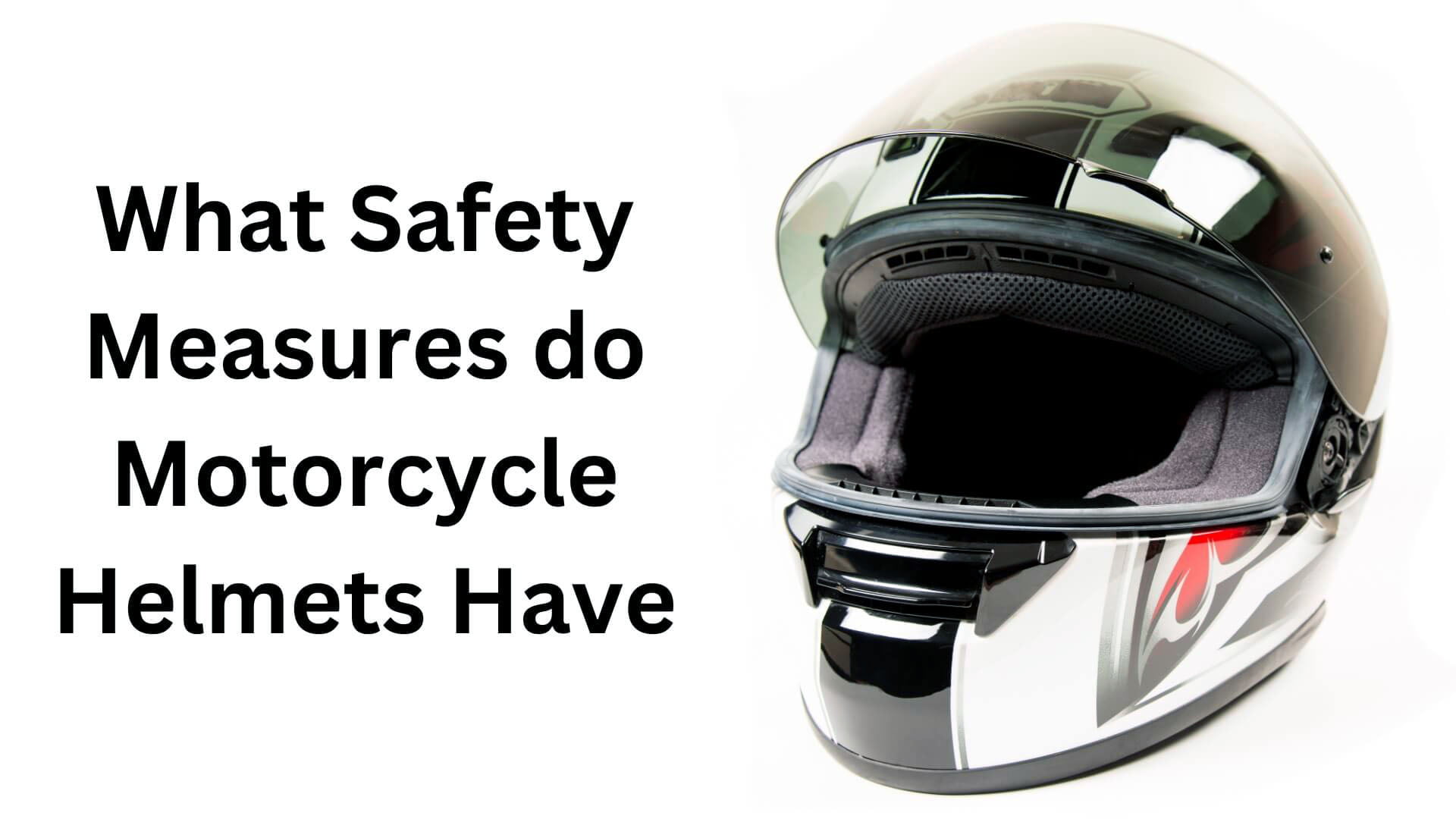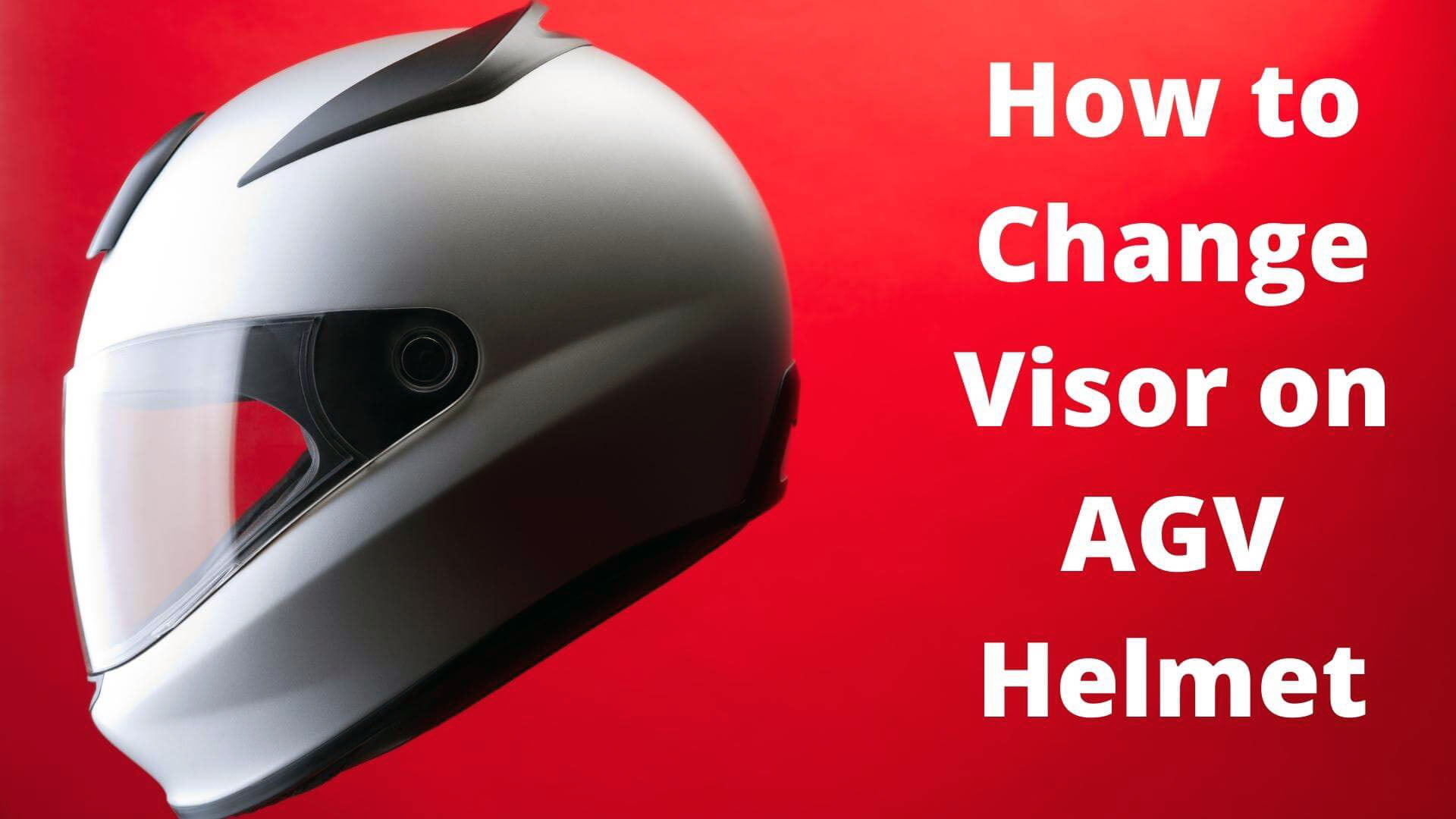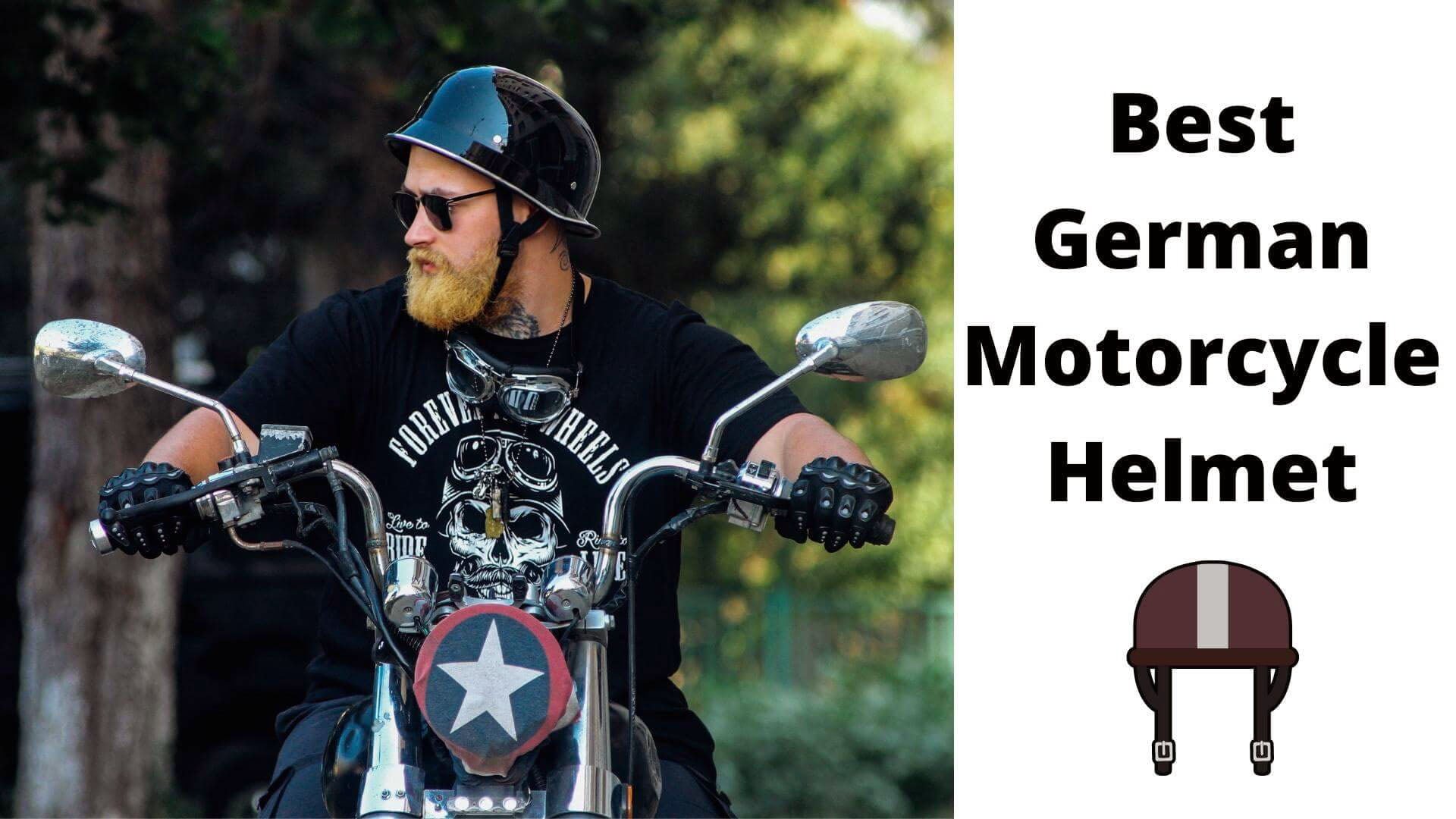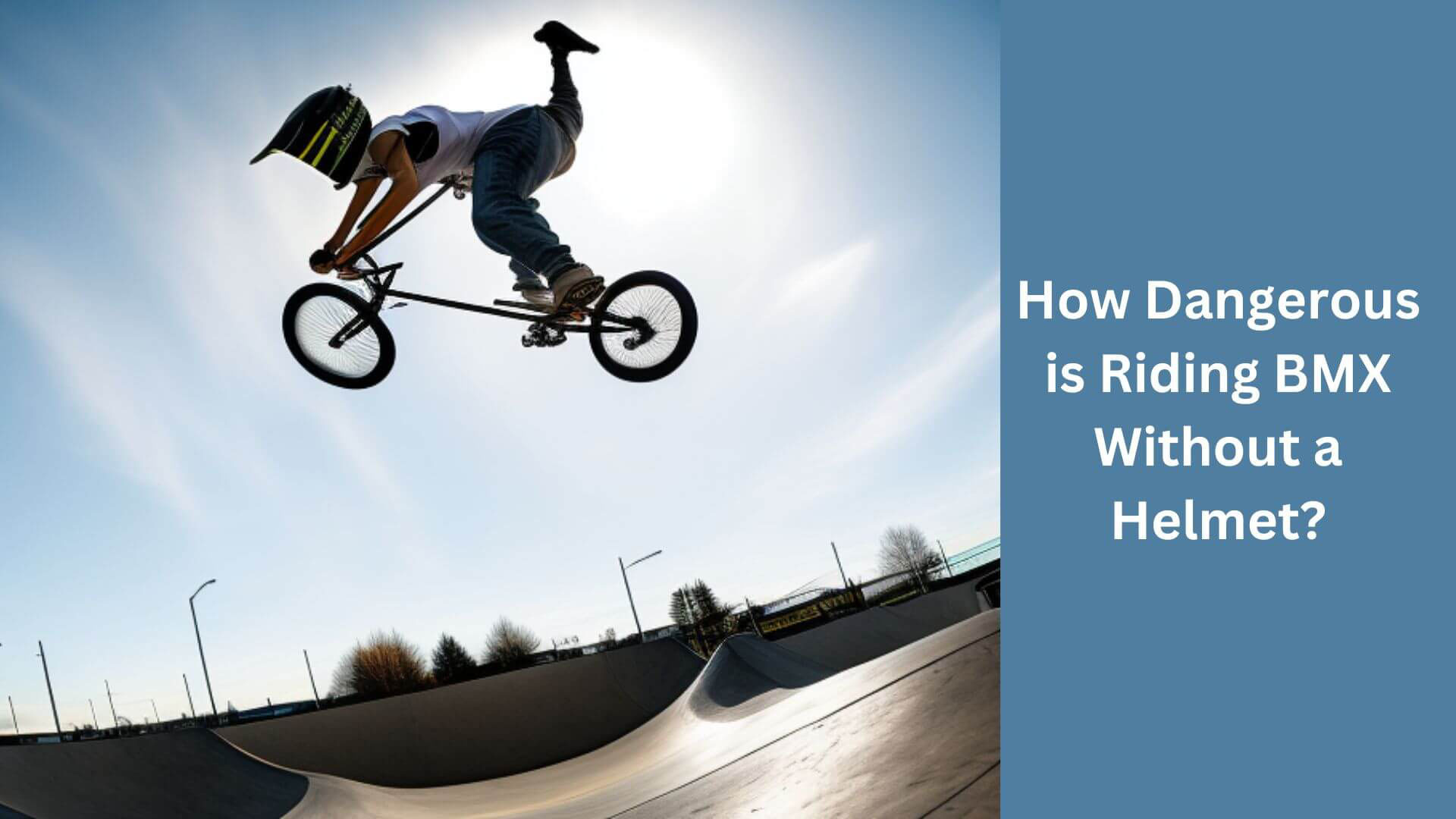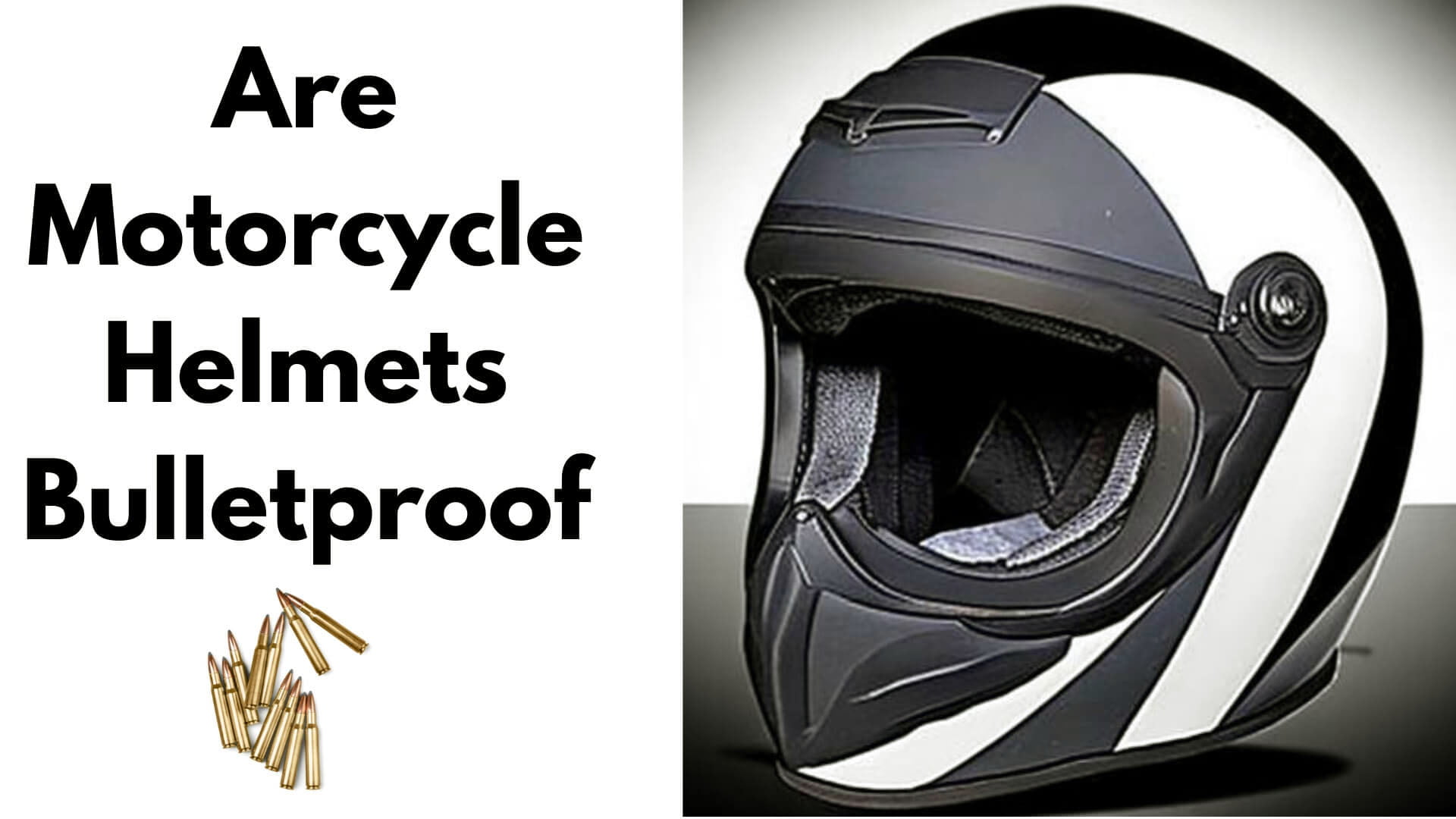How Motorcycle Helmets Work To Keep You Safe.

Motorcycle helmets are one of the essential safety gear you’ll ever wear. They play an important role in protecting both you and your motorcycle from injury in the event of a crash.
However, you may not know all of the fantastic things about motorcycle helmets that I’ve compiled for you in this article. I’ve researched and compiled surprising things about motorcycle helmets that you may not have known.
What Are Helmets?

Helmets are protective headgear worn by cyclists, motorcyclists, equestrians, and other riders.
There is a variety of helmet types available for different kinds of activities.
For example, downhill mountain biking helmets are designed to withstand more significant impacts and protect the rider’s head from rocks and debris encountered on the trail.
The fit of a helmet is the most critical aspect. A good-fitting helmet should be snug with no more than one inch (2.5 cm) of movement in any direction on the head or face when you try to move it around your head.
The second most important part is safety features such as impact protection, which can be achieved using an in-mold construction or an expanded polystyrene (EPS) shell.
These safety features provide impact protection in the event of an accident and can help reduce the risk of harm to people or objects that may be involved in an accident.
Check Also: The 20 Best Motorcycle Helmets For Safe Riding.
What is Inside Your Helmet?
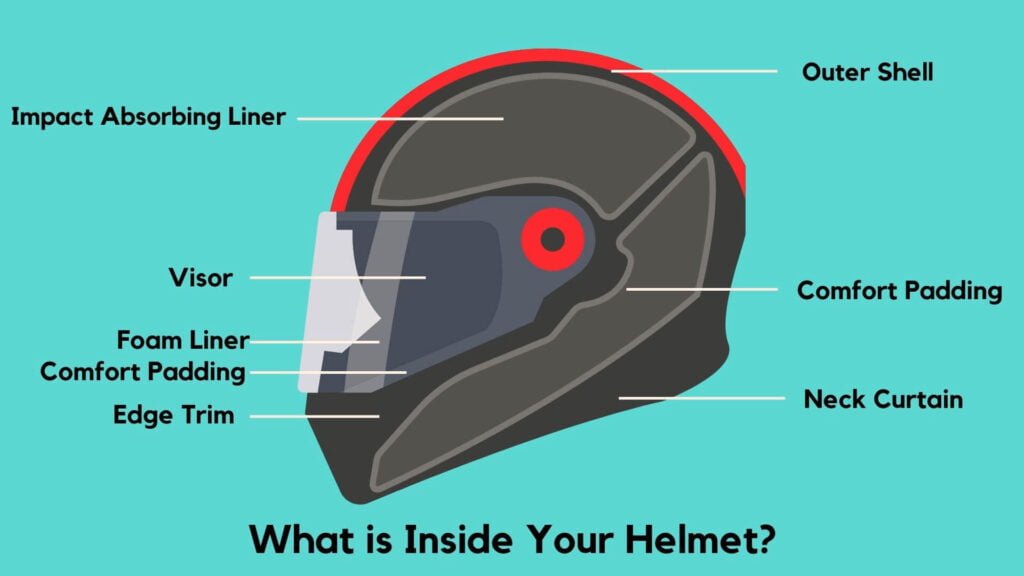
A motorcycle helmet is a safety equipment worn on a rider’s head. It’s typically made from hard, durable material and has several protective features.
The most important part of the helmet is the liner, which is made from foam or highly compressible material.
When you put on your motorcycle helmet, you’ll find that it has several different straps. You’ll need to secure the helmet tightly to your head to ensure it stays in place during an accident.
Several vents are built into the helmet, allowing air to circulate and keep you cool during hot weather.
1. The outer shell
The helmet’s outer shell is the visible and outermost portion and can form its exoskeleton. This often comes in either polycarbonates, ABS, or fiberglass-reinforced plastics. More uncommon materials include composites such as carbon fiber and Kevlar.
The outer layer is designed to break down slowly and naturally, ensuring optimum sliding performance.
2. The Impact-absorbing liner
The liner of a helmet is essential because it helps to protect the head from bumps, scrapes, and significant impacts. It does this by absorbing the energy from shocks while distributing the loads to prevent extreme pressures on the head.
3. A Foam liner
A foam liner is a cushioning surface between the EPS liner and the head of the rider. It’s made up of foam pads that snugly hold your head in place while wicking away moisture from sweat. For optimal performance, a good liner keeps you free from relative movement to other parts of your body.
4. The Retention system
A retention system comprises straps around the neck to keep the helmet in place. They are sewn on with a fastener and help secure the helmet to your head, preventing it from coming off during an impact.
5. A Face shield
A visor is a face shield that typically covers the viewport of a helmet. It prevents debris from getting inside your helmet and harming you.
6. The Ventilation system
The airflow from your helmet ventilates the air around you, which helps to keep you comfortable and also prevents your visor from fogging up.
What Makes A Good Helmet For Riding?
Motorcycle helmets are designed to protect the head in a collision. The helmet must meet specific safety requirements to be approved for use on a motorcycle. These requirements include fit, ventilation, impact resistance, and noise reduction.
One of the most critical factors in choosing a motorcycle helmet is fit. The helmet must be snug but not too tight, and it should fit well across the forehead, around the ears, and over the hairline.
If it is too tight, it will not provide enough protection in a crash and can cause headaches or other discomfort. If too loose, air can flow into and around the helmet during an impact, potentially causing brain injuries.
Another critical factor in choosing a motorcycle helmet is ventilation. A good helmet should allow air to flow freely through the device so that heat and moisture are expelled from the head quickly in case of a crash.
If air circulation is restricted, sweat can build up inside the helmet, leading to condensation on lenses that can cloud vision during riding conditions or make it difficult to hear while riding at high speeds.
Impact resistance is also essential when selecting a motorcycle helmet.
How Do Motorcycle Helmets Work? 7 Things You Need To Know
A motorcycle helmet protects the head from injuries during a crash. The helmet contains various features that work together to help protect the rider.
The outer shell of the helmet is made from rugged, lightweight plastic. This shell is designed to absorb energy in a crash and protect the head from being hit directly.
The helmet’s inner liner is made from foam, which helps reduce impact forces on the head and keeps your head cooler in hot weather conditions.
In addition, many motorcycle helmets come with adjustable straps that help to ensure a snug fit and prevent movement while riding.
1. How Do Motorcycle Helmet Communications Work?
A motorcycle helmet is a complex piece of safety equipment. It must be able to communicate with the systems on your bike to work properly. For example, a motorcycle helmet may need to be able to talk to the bike’s engine to keep you safe while you’re riding.
2. How Do Bluetooth Motorcycle Helmets Work?

Answer: Bluetooth technology is becoming increasingly popular in safety gear. Bluetooth motorcycle helmets allow riders to connect their helmets with devices like phones and computers. This allows riders to stay connected while they’re on the road.
3. How do motorcycle helmets work with other safety gear?
Motorcycle helmets work with other safety gear to help protect riders from injuries in the event of a crash. For example, motorcycle helmets work with other protective gear such as a motorcycle jacket and pants to help keep the rider safe in the event of a crash.
Additionally, motorcycle helmets work with other safety features on the bike, such as an ABS braking system and airbags, to help protect riders during a crash.
4. How do motorcycle helmets work in cold weather?
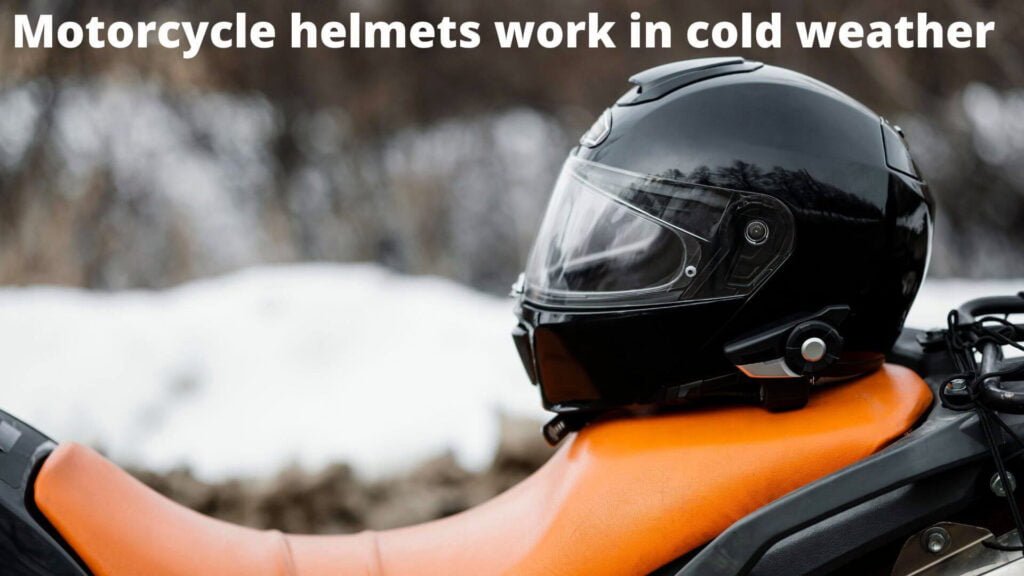
Motorcycle helmets work in cold weather by protecting the head from impact and keeping the head warm.
In cold weather, the air is colder than the skin on the face, so when a motorcycle crashes into a barrier or another vehicle, it can cause injuries to the rider’s face.
The helmet helps reduce these injuries by absorbing some of the impacts, and protectors in the helmet help to protect against facial fractures.
Motorcycle helmets work in cold weather by keeping your head warm. They also have a foam liner that absorbs shock.
Read More: how to stop motorcycle helmet from fogging up
5. How do motorcycle helmets work in hot weather?
A motorcycle helmet is made to protect the head from impact in the event of a crash. It absorbs energy that would otherwise be directed towards the rider’s head. A motorcycle’s engine will produce more heat and exhaust fumes in hot weather.
This heat and exhaust could cause a helmet to become too hot to wear, leading to severe injuries if it comes off in a crash. All motorcycle helmets must meet specific safety requirements to be sold in the United States.
These requirements include a minimum temperature rating of 104 degrees Fahrenheit and an ability to protect against impact forces up to 10 Gs.
Read More: best full face motorcycle helmet for hot weather
6. How do motorcycle helmets work in the rain?
Motorcycle helmets absorb a crash’s impact and then distribute that force around the head. This is done using specially designed foam around the helmet’s inside. The foam expands when it comes into contact with water and then contracts to its original size again.
This process helps disperse a crash’s force across a larger area, reducing your chance of suffering severe head injuries.
Motorcycle helmets work in the rain by keeping your head and face dry. They also have drainage systems that keep your head cool.
Read More: how to keep visor clear in rain
7. How do motorcycle helmets work in the event of a crash?
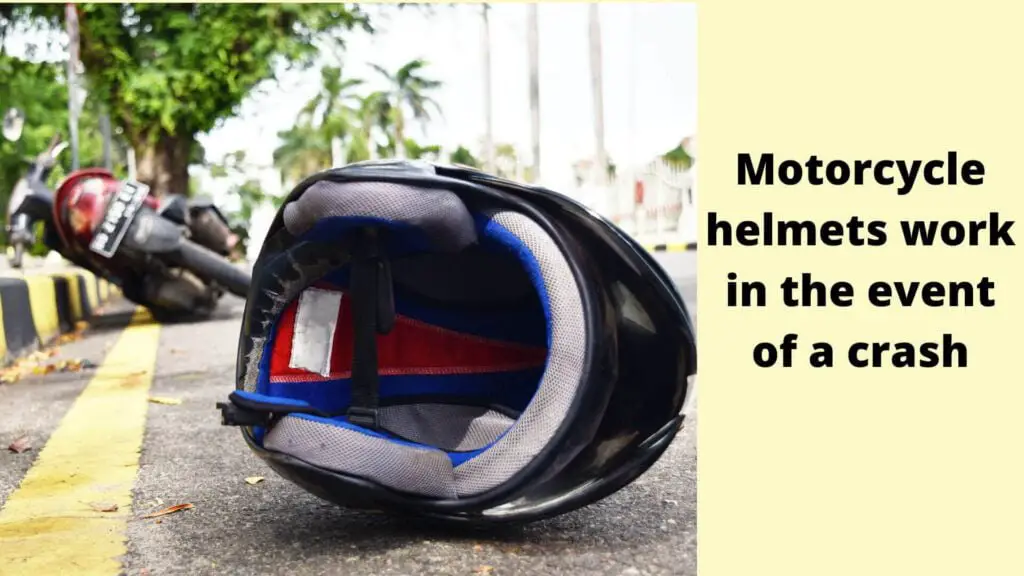
Motorcycle helmets work to protect the head in a crash. They are designed to distribute the force of a collision over a larger area of the head, reducing the potential for serious injury. In addition, motorcycle helmets often have visors that can help reduce glare and protect against windblown debris.
In a crash, motorcycle helmets work by absorbing the impact. They also have systems to communicate with other riders and help with emergency response.
Why Are Motorcycle Helmets So Essential For Safe Riding?
Motorcycle helmets are essential for safe riding. They protect the head and face from injuries in the event of a crash.
Motorcycle helmets also keep riders warmer in cold weather and quieter when riding at night or in high-traffic areas.
In addition, motorcycle helmets help keep riders’ hair out of their eyes in windy conditions.
1. Motorcycle helmets are essential for safe riding because they protect the head and brain from injuries in a crash.
2. Motorcycle helmets reduce the risk of death and severe head injuries in a crash by up to 90%.
3. Motorcycle helmets can reduce the severity of brain injuries by as much as 50%.
4. All motorcycle riders should wear a helmet, regardless of experience or skill level.
Conclusion:
As you can see, motorcycle helmets are essential for safe riding. Make sure you have a helmet that fits well and is in good condition.

Hey, I’m Hrithik Hossain. I am the head of helmethacks.com, which specializes in safety helmets. I am looking to connect with anyone interested in purchasing a helmet or who has any questions about different types of helmets. I have over 8 years of experience as a helmet expert, and I can’t wait to help you find the perfect helmet for you. I can help you with any questions regarding helmets, from the best brands to fitting, style, and more! I really enjoy keeping people safe by ensuring they have the best protection possible.

